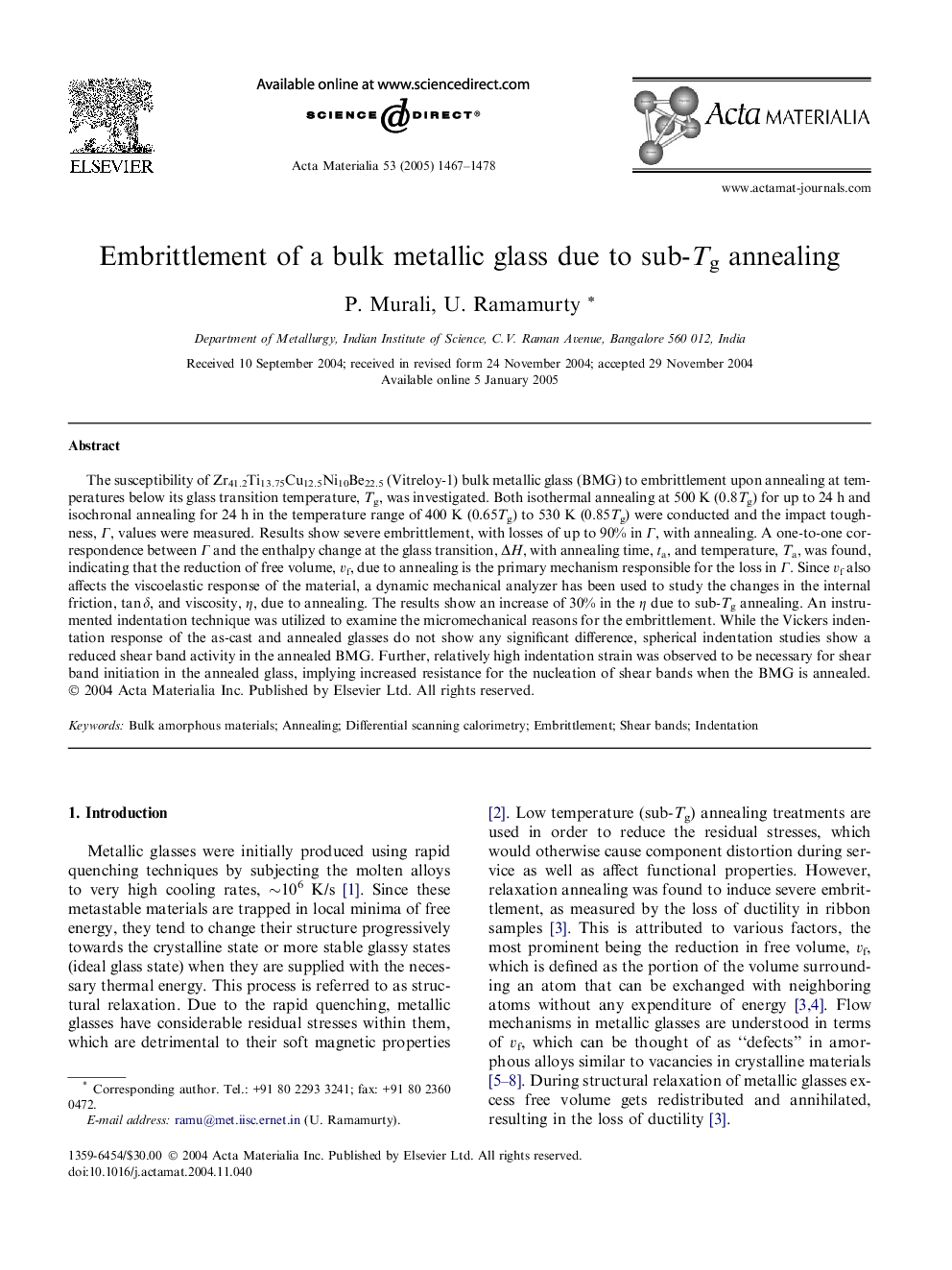| Article ID | Journal | Published Year | Pages | File Type |
|---|---|---|---|---|
| 10621066 | Acta Materialia | 2005 | 12 Pages |
Abstract
The susceptibility of Zr41.2Ti13.75Cu12.5Ni10Be22.5 (Vitreloy-1) bulk metallic glass (BMG) to embrittlement upon annealing at temperatures below its glass transition temperature, Tg, was investigated. Both isothermal annealing at 500 K (0.8Tg) for up to 24 h and isochronal annealing for 24 h in the temperature range of 400 K (0.65Tg) to 530 K (0.85Tg) were conducted and the impact toughness, Î, values were measured. Results show severe embrittlement, with losses of up to 90% in Î, with annealing. A one-to-one correspondence between Î and the enthalpy change at the glass transition, ÎH, with annealing time, ta, and temperature, Ta, was found, indicating that the reduction of free volume, vf, due to annealing is the primary mechanism responsible for the loss in Î. Since vf also affects the viscoelastic response of the material, a dynamic mechanical analyzer has been used to study the changes in the internal friction, tan δ, and viscosity, η, due to annealing. The results show an increase of 30% in the η due to sub-Tg annealing. An instrumented indentation technique was utilized to examine the micromechanical reasons for the embrittlement. While the Vickers indentation response of the as-cast and annealed glasses do not show any significant difference, spherical indentation studies show a reduced shear band activity in the annealed BMG. Further, relatively high indentation strain was observed to be necessary for shear band initiation in the annealed glass, implying increased resistance for the nucleation of shear bands when the BMG is annealed.
Keywords
Related Topics
Physical Sciences and Engineering
Materials Science
Ceramics and Composites
Authors
P. Murali, U. Ramamurty,
